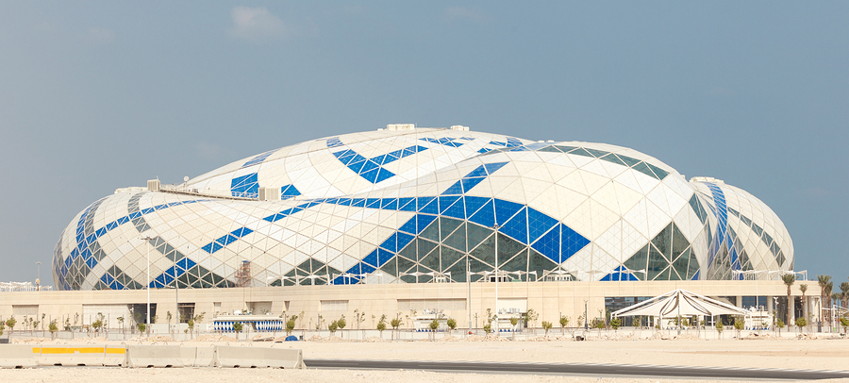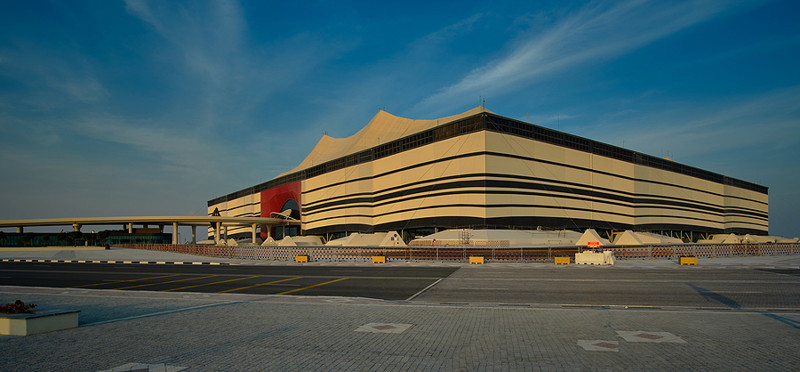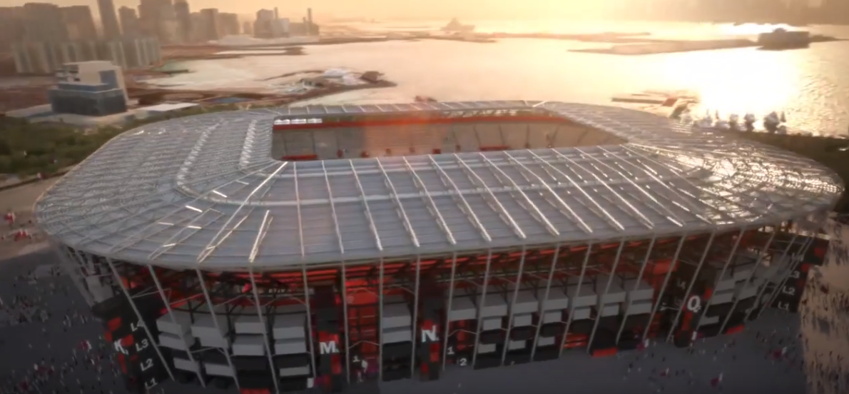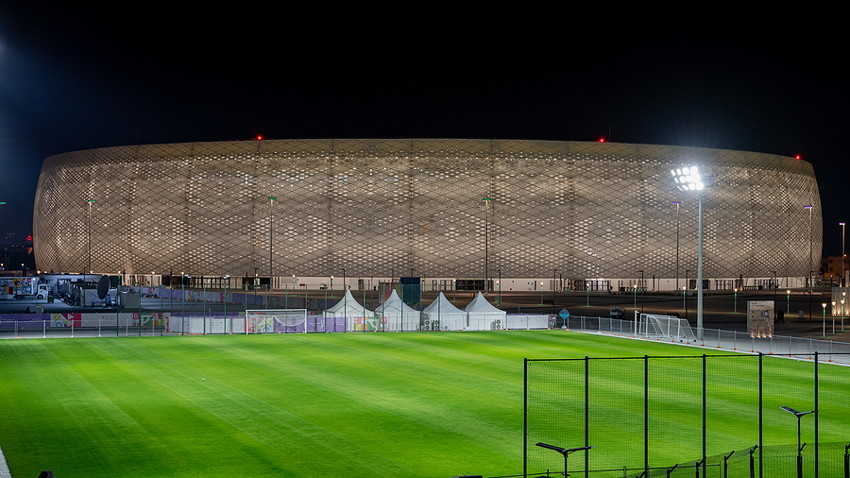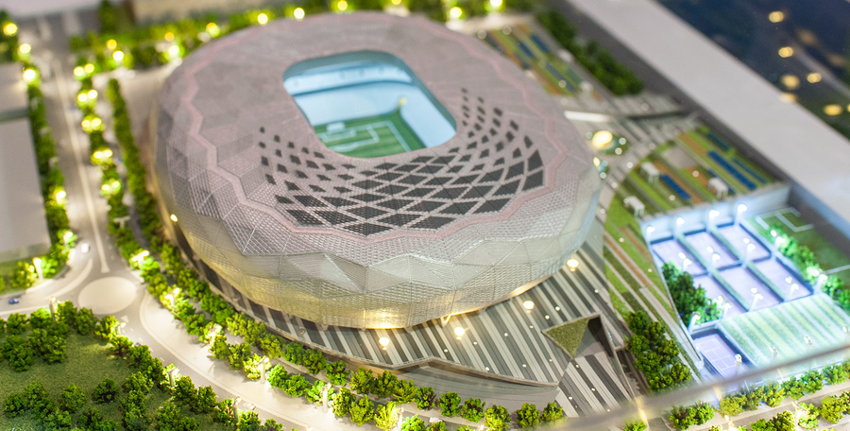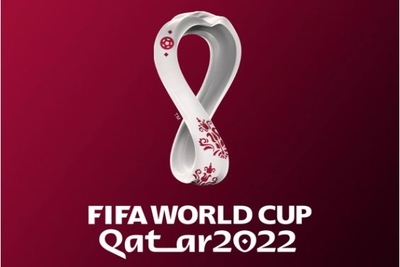 The 2022 World Cup was held amidst a lot of controversy but was carried off seamlessly producing one of the best tournaments for years. Argentina won the trophy for the third time in their history beating France in the final 4-2 on penalties at the Lusail Iconic Stadium in Qatar.
The 2022 World Cup was held amidst a lot of controversy but was carried off seamlessly producing one of the best tournaments for years. Argentina won the trophy for the third time in their history beating France in the final 4-2 on penalties at the Lusail Iconic Stadium in Qatar.
Many of the FIFA officials that awarded the World Cup to Qatar were found later to be less than honest in their dealings. It is therefore possible, as many believe, that the award of the tournament to Qatar could have been partial fix. Whether that is or isn’t the case the fact of the matter is Qatar held the World Cup and did a good job of it.
The final itself was one of the best in history. Two superstars in Lionel Messi and Kylian Mbappe led the charge in a pulsating game that saw Argentina dominate most of the first half thanks to a penalty from Messi and Di Maria before Mbappe on his own dragged the game into extra-time with two goals in the last 10 minutes of normal time. Extra-time played out very much as the 90 minutes did with Messi scoring before Mbappe levelled with a penalty with 2 minutes to go.
The PSG team mates both scored their opening penalties in the shootout but two subsequent misses from France meant that the defending champions stayed on two World titles while Argentina got their much converted third World Cup trophy.
Morocco were the main surprises reaching the semi-final, the first African team to progress that far, they beat Belgium, Spain and Portugal along the way. Qatar themselves didn’t too too well, losing all three group fixtures and notching up the worst host performance in history. To be fair, they were not expected to do much else but it highlights why, perhaps, the awarding of a World Cup to Qatar was so misjudged.
Many of the stadiums were built especially for the 2022 World Cup, and all performed well – although it is notable that only eight stadiums were used in Qatar versus twelve in Russia. Towards the knockout stages pitches were not in the best condition and although it didn’t impact the football it is another example of how giving a World Cup to such a small nation was misguided.
In our historical archive below you can see all of the stadiums and fixtures used during the tournament.
World Cup 2022 Stadiums
Lusail Iconic Stadium
The Building Process
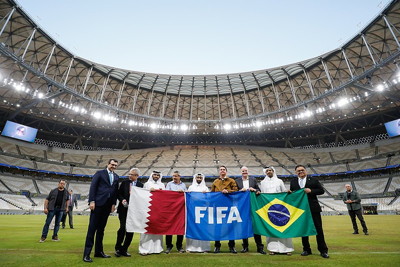
Built by by HBK Contracting and China Railway Construction Corporation as a joint-venture, construction on the Lusail Iconic Stadium began on the 11th of April 2017. The concept for the stadium was a secret for a long time, not least of all because of the general secrecy surrounding the World Cup in Qatar. The enabling works began in 2015, with new roads and metro lines being built in order to ferry passengers there for matches. It was designed by Foster and Partners with the help of boutique architecture firm MANICA Architecture.
By the January of 2021, the stadium’s overall build was 77% complete, whilst the turf that would be used for the pitch was being nurtured ready for transportation to the venue. The overall building of it was completed by December of that year, with the various parts of it being tested in order to prove that it was good to go for matches. It wasn’t just the stadium that needed to be built, with an entire city being constructed in order to house it. This included golf courses, theme parks and 22 hotels to welcome visitors for the tournament.
Main Features
Boasting an almost perfectly circular footprint, the stadium has a capacity of 80,000. That makes it not only the largest sports stadium in Qatar but also the largest in the Arab region. It has a zero carbon footprint and uses solar power to cool it. It is divided into two halves thanks to the fact that it sits on the masterplan’s primary axis. A circular pool of water encircles it, with six bridges crossing this ‘moat’ to give spectators access.
Significant Matches / Stages It Will Host
The Lusail Iconic Stadium will be used to host ten different matches during the World Cup. This includes both a Round of 16 match, a Quarter-Final, a Semi-Final and the Final itself. Perhaps the most exciting match that it will host during the Group Stage is that taking place between Argentina and Mexico in Group C.
Trivia
Following the World Cup, the Lusail Iconic Stadium will see its capacity reduced by 40,000 seats. The excess seating will be removed entirely and used for outdoor seating in new homes, whilst other parts of it will be re-purposed. The likes of cafés, community spaces and shops will take up the newly created space. It is intended that athletic and education facilities will also be built at the stadium, whilst a health clinic is also planned.
Stats:
- What Groups Will The Stadium Be Used For? – Group C, Group G, Group H
- Highest Stage The Stadium Will Be Used For – Final
- The Number Of Matches Hosted – 10
- Capacity – 80,000
- Opened – 2021
- City – Lusail
Al Bayt Stadium
The Building Process
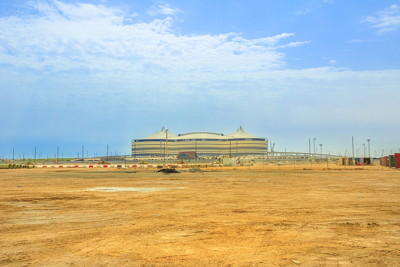 Italian construction specialists Webuild S.p.A won the contract to build the Al Bayt Stadium with Comolai in 2015. When the original plans were submitted to FIFA in 2010, the venue had room for 45,000 fans. That changed over the years prior to construction getting underway, so that it now has room for 60,000. Taking up 200,000m², it was designed by Salini Impregilo and building work began in 2015. The tent feature of the stadium is made of polytetrafluoroethylen, using the traditional colours of red, white and black.
Italian construction specialists Webuild S.p.A won the contract to build the Al Bayt Stadium with Comolai in 2015. When the original plans were submitted to FIFA in 2010, the venue had room for 45,000 fans. That changed over the years prior to construction getting underway, so that it now has room for 60,000. Taking up 200,000m², it was designed by Salini Impregilo and building work began in 2015. The tent feature of the stadium is made of polytetrafluoroethylen, using the traditional colours of red, white and black.
The foundation work, as well as the building of the 12-metre lower tier walls, neared its completion by November of 2016. It was necessary to excavate and de-water the area before installing huge sections of pipe connections. A total of 21 cranes worked on the site, including a 280 tonne mega crane. The stadium columns needed to be erected before most of the rest of the ground, reaching 21 metres. Secondary columns, reaching a height of 37 metres, were built next. Pre-cast elements had to be put in place before other building works could be carried out.
The roof structure’s assembly and installation began in September of 2017. Manufactured in Italy, it was transported to Qatar to be installed in place at the stadium. Other parts of the stadium were also constructed in Europe, such as the facade, which was made in Germany before being shipped to Turkey. There, it was cut and transformed in order to become installation-ready ahead of its shipment to Qatar installation. Bin Omran Trading & Contracting and Al Sulaiteen Agricultural & Industrial Complex have been responsible for the landscaping around the ground.
Main Features
The main aspect of the Al Bayt Stadium is the fact that it is designed to look like a giant tent, inspired by the Bedouin tents, Bayt Al Sha’ar, that are used by nomads in the Gulf region. Tent-like structures envelop the exterior, allowing for excellent acoustics.
The stadium also boasts a retractable roof, which can close within 20 minutes and will allow the best cooling conditions for football matches to be played in. There are three tiers of seating, with two of them being pre-cast structures and the other made of modular structural steel.
Significant Matches / Stages It Will Host
The Al Bayt Stadium will be used to host eight matches during the World Cup, with the opening game of the tournament amongst them. For England fans, the most noteworthy game at the ground will be the one between the Three Lions and the United States, scheduled to take place on the 25th of November. For everyone else, the match to watch out in the Group Stage is surely that between Spain and Germany two days later. A Round of 16, Quarter-Final and Semi-Final match will also be played here.
Trivia
Al Bayt Stadium has been built using a modular design that enables it to be dismantled after the World Cup. The top tier of seating, which makes up about 30,000 seats, will be removed and sent to other countries in order to allow the construction of new sports grounds in developing nations. What is left will be converted into a stadium for the local Al Khor community. The upper concourse, meanwhile, will become a hotel, with a shopping centre, restaurants and shops. The local community will be able to use landscaped tracks for cycling, running and horse riding.
Stats
- What Groups Will The Stadium Be Used For? – Group A, Group B, Group E, Group F
- Highest Stage The Stadium Will Be Used For – Semi-Final
- The Number Of Matches Hosted – 8
- Capacity – 63,439
- Opened – 2021
- City – Al Khor
Stadium 974
The Building Process
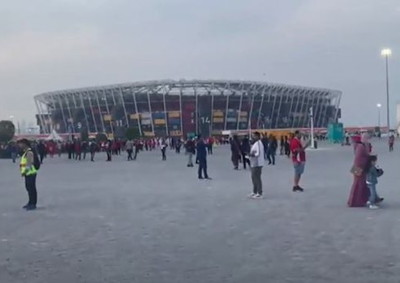
Fenwick Iribarren Architects came up with the concept for Stadium 974, which is situated on an artificial promontory on a 450,000 square-metre waterfront site. Originally known as the Ras Abu Aboud Stadium, it took on its current name on account of the fact that it uses 974 shipping containers in its building, as well as that being Qatar’s international dialling code. The modular design of the ground allowed for reduced construction costs and a quicker build time. On top of that, material waste was much lower than for other stadiums as a result of the nature of the design.
The stadium was built with gaps between the seats in order to allow for natural ventilation, limiting the need for artificial cooling. The fact that the ground is close to the sea also facilitates this. Environmental preparations began in October 2017, with earthworks being completed by the July two years later. At this point, the first batch of shipping containers arrived ready to be installed. The main building works began in November of 2019, with the main structure being completed by March of 2021. Built on a rectangular plan with rounded edges, it is divided into two levels.
Main Features
There is no question that the shipping containers make up the main feature of Stadium 974. They aren’t just there to take up space, either; the shipping containers are where visitors will find the likes of bathrooms and concessions stands. Indeed, some of them even contain the staircases that are used to get from one floor to the next. In order to prove the environmentally friendly nature of the stadium, a portion of the containers were used to ship over other aspects of the ground before being put in place themselves.
Significant Matches / Stages It Will Host
Stadium 974 will be used for the Group Stage and a Round of 16 match, but it isn’t going to host any of the other knockout rounds. As a result, there aren’t really any genuinely thrilling matches that are going to be held here. The Round of 16 game will be between the winner of Group G and the runner-up in Group H, who might have played here if it ends up being Portugal, Ghana, Brazil, Switzerland or Serbia. France versus Denmark is probably the pick of the Group Stage matches hosted here, which tells you quite a lot.
Trivia
The entire point of Stadium 974 is that it was designed to be as environmentally friendly as possible. Both the shipping containers and the seats will be dismantled in order to be used in under-developed countries around the world. It is the first time that a temporary venue has been used in the history of the FIFA World Cup. The Global Sustainability Assessment System awarded the ground a four-star rating. The lack of requirement for cooling technology as well as the efficient design means that the stadium’s water usage is about 40% less than other grounds.
Stats
- What Groups Will The Stadium Be Used For? – Group C, Group D, Group G, Group H
- Highest Stage The Stadium Will Be Used For – Round of 16
- The Number Of Matches Hosted – 7
- Capacity – 40,000
- Opened – 2021
- City – Ras Abu Aboud
Al Thumama Stadium
The Building Process
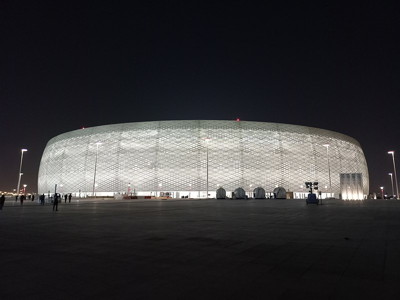
Built on a 51.54 hectare site about 12 kilometres from the main airport in Qatar, the Al Thumama Stadium’s design was inspired by the woven headgear won by Arab men, the gahfiya. It has a circular design, symbolising Qatar’s youth as well as the country’s growth on the global sporting scene. A joint-venture from AlJaber Engineering and Tekfen Construction, who were appointing in February of 2017 to be the main contractors, it was designed by a subsidiary of the Arab Engineering Bureau, Ibrahim Jaidah Architects and Engineers.
The stadium’s design was also assisted by Fenwick Iribarren and Schlaich Bergermann Partner, with Hilson Moran brought in to offer environmental consultancy services. Grading and levelling works were carried out by Boom Construction, allowing for the foundations to be set prior to the construction getting underway. The stadium is surrounded by a 50,000 m2 public park. As with numerous other grounds being built for the World Cup, its construction has been criticised by Amnesty International on human rights grounds.
Main Features
Promising to be a fusion of Arab cultural heritage and modern architecture, the stadium was the first one to use the cooling technology that will be in place at other grounds during the World Cup. The pattern on the roof is what is linked to the headgear that inspired the ground’s design. It includes tracks for athletics, equestrian events and cycling, with facilities also available for basketball, handball, tennis and swimming, amongst other sports.
Significant Matches / Stages It Will Host
The most significant match that will be hosted by Al Thumama Stadium is unquestionably the Quarter-Final game between the winners of Match 55 and the victors in Match 56. It will also be the ground that hosts the Round of 16 match between the winners of Group D and the runners-up in Group C. From a political point of view, there is no question that eyes will be on the ground when Iran go up against the United States, so social media users can expect a deluge of ‘hot takes’ when that comes around.
Trivia
The A Thumama Stadium was given the MIPIM/Architectural Review Future Project Award in the Sports and Stadium category in 2018. During the FIFA Arab Cup in 2021, the ground was used to host six games, including the semi-final between the hosts, Qatar, and Algeria. Algeria won 2-1, going on to win the competition when they defeated Tunisia 2-0 after extra-time.
Stats
- What Groups Will The Stadium Be Used For? – Group A, Group B, Group E, Group F
- Highest Stage The Stadium Will Be Used For – Quarter-Finals
- The Number Of Matches Hosted – 8
- Capacity – 40,000
- Opened – 2021
- City – Al Thumama
Education City Stadium
The Building Process
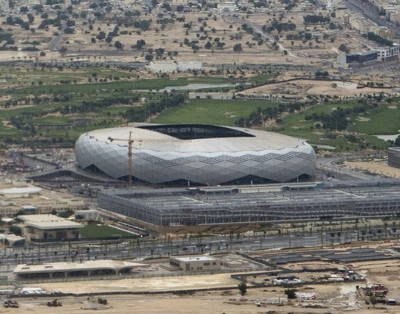
Located on the outskirts of Doha, Education City Stadium was built with 20% of green materials. As a result, it is considered to be one of the world’s most environmentally friendly sports grounds. JPAC JV was the building contractor, with Pattern Design appointed as the lead architect after an initial design by FIA Fenwick Iribarren Architects, whilst Buro Happold brought in as the engineering head. Nicknamed the Diamond in the Desert, it boasts an odd look thanks to diamond-shaped areas on its exterior.
The first stadium in the world to earn a five-star rating from the Global Sustainability Assessment System programme, it has a large amount of concrete structure within its design. The plastic seats were the last things to be put in place, along with the turf that makes up the pitch. The design was done in order to meet FIFA’s requirements for a bowl-shape, as well as necessary lighting and decent sight lines. There was a necessity to keep up with the fast-paced nature of the programme to be ready in time for the World Cup.
Main Features
Open to the sun and wind, the size of the roof opening means that the stadium is exposed to sunlight and gusts or warm air. That forces the cool air out, but the nature of things means that the cool air returns within five minutes. This cool air is released from air distribution boxes, known as plenums, that are located under the seats. The nature of the stadium is such that the carbon footprint has been reduced, whilst the design makes use of passive elements. It has been built at a lower level than the natural area, adding to the temperature controls.
Significant Matches / Stages It Will Host
The Education City Stadium will be used for the Group Stage, in addition to a Round of 16 match and a Quarter-Final game. The diluted nature of this World Cup is such that there are no real standout matches in the Group Stage of the competition, which is only likely to get worse as more teams are added to the tournament in the future. Perhaps South Korea’s game against Portugal is one of the more interesting ones, with Poland versus Saudi Arabia like to be a close one for all of the wrong reasons.
Trivia
The Education City Stadium should have hosted the third-place match and the final of the 2019 FIFA Club World Cup, as well as Liverpool semi-final in the competition. Sadly, it wasn’t ready in time and so Liverpool’s game was moved elsewhere. It was used for that competition a year later, however, with Bayern Munich and UANL playing the final there. It also hosted the East and West Zone matches during the 2020 AFC Champions League, in addition to give matches when the FIFA Arab Cup 2021 was played in Qatar.
Stats
- What Groups Will The Stadium Be Used For? – Group C, Group D, Group H
- Highest Stage The Stadium Will Be Used For – Quarter-Finals
- The Number Of Matches Hosted – 8
- Capacity – 45,350
- Opened – 2020
- City – Al Rayyan
Ahmad bin Ali Stadium
The Building Process
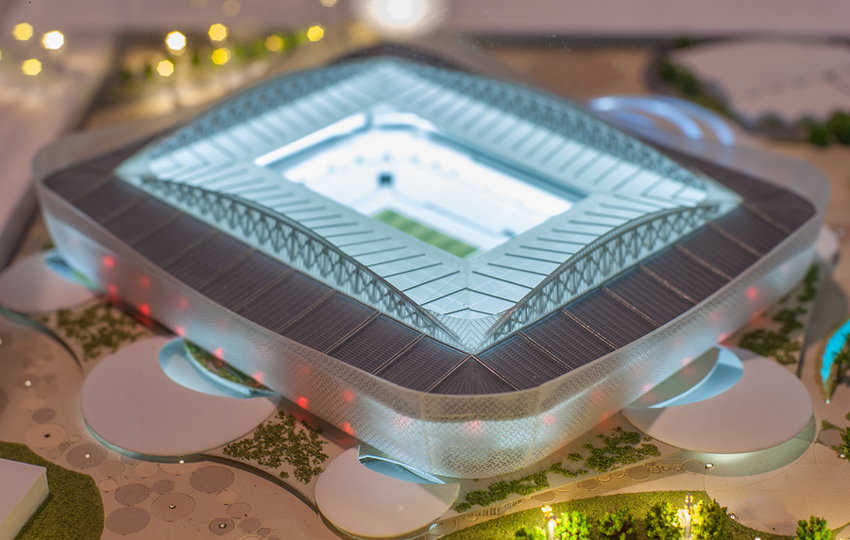 There was already an Ahmad bin Ali Stadium where the new one has been built, but this was demolished in 2015 in order to make way for the modern version. It was hoped that as much as 90% of the rubble from the destruction could be used either in the building of the new ground or else in public art projects. Construction of the new ground began in the early part of 2016 as a joint-venture between Al-Balagh and Larsen & Toubro. Things moved quickly to begin with, allowing for the pouring of the first concrete five weeks ahead of schedule.
There was already an Ahmad bin Ali Stadium where the new one has been built, but this was demolished in 2015 in order to make way for the modern version. It was hoped that as much as 90% of the rubble from the destruction could be used either in the building of the new ground or else in public art projects. Construction of the new ground began in the early part of 2016 as a joint-venture between Al-Balagh and Larsen & Toubro. Things moved quickly to begin with, allowing for the pouring of the first concrete five weeks ahead of schedule.
Over the course of the next few years, more than 100,000 metres cubed of concrete as well as 6,700 tonnes of structural steel was used in the building of the stadium. As well as building the venue, there was a need to improve the local area, with connecting roads to shopping centres and other services needing to be built. When you consider that the original stadium was built in the early 2000s, it shows how much work has gone into preparing for the 2022 World Cup that it was demolished and re-built over four years.
Main Features
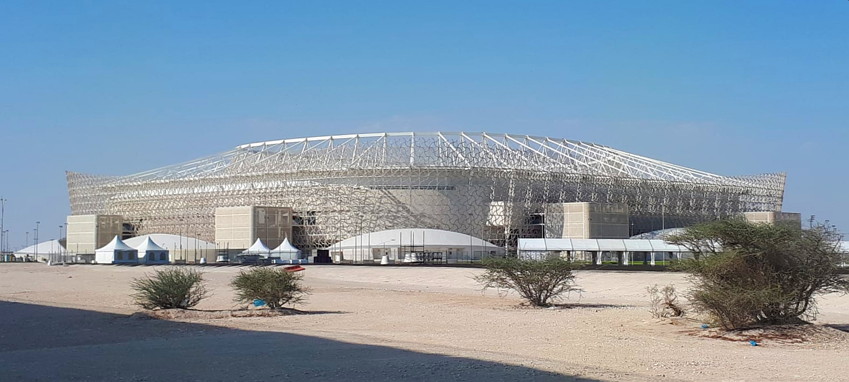
One of the main additions to the stadium was a large ‘media facade’, which uses a membrane to act as a screen for score update, commercials and news to be broadcast onto. With more than 40,000 seats, it is worth noting that all of them will be under shade for the duration of matches.
Significant Matches / Stages It Will Host
The stadium will be used for Group B matches, which means that it is of note for fans of England and the United States. Both of them will play matches here, but it is likely to be the game between Belgium and Croatia that will gather the most attention. The latest stage of the competition held here will be the Round of 16, seeing the winners of Group C go up against the runners-up in Group D.
Trivia
The upper level of seats will be removed in the wake of the World Cup. They will be sent to less developed countries to allow them to host football tournaments in the future. It was one of two venues used to host FIFA Club World Cup matches in 2020, hosted four matches during the FIFA Arab Cup in 2021 and was opened exactly two years before the start of the 2022 World Cup.
Stats
- What Groups Will The Stadium Be Used For? – Group B, Group E, Group F
- Highest Stage The Stadium Will Be Used For – Round of 16
- The Number Of Matches Hosted – 7
- Capacity – 40,740
- Opened – 2003 (Old Stadium), 2020 (Rebuild)
- City – Al Rayyan
Khalifa International Stadium
The Building Process
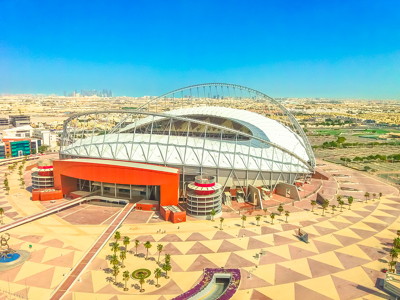 The Khalifa International Stadium is the oldest stadium in Qatar, having opened its doors for the first time in 1976. It was renovated in 2005 and then improved again between 2014 and 2017. It was mainly used for football ahead of the 2005 changes, though it is capable of hosting other sports. As an example, it has hosted the Doha Diamond League track and field competition since 1997. In order to modernise the ground in time for the World Cup, a host of renovations were carried out in the mid-2010s, which included adding seating capacity.
The Khalifa International Stadium is the oldest stadium in Qatar, having opened its doors for the first time in 1976. It was renovated in 2005 and then improved again between 2014 and 2017. It was mainly used for football ahead of the 2005 changes, though it is capable of hosting other sports. As an example, it has hosted the Doha Diamond League track and field competition since 1997. In order to modernise the ground in time for the World Cup, a host of renovations were carried out in the mid-2010s, which included adding seating capacity.
Other upgrades that the stadium enjoyed included the introduction of advanced cooling technologies, which will be crucial for matches to be able to take place safely and comfortably. Increased security measures were brought in, as well as a new LED lighting system. The entire stadium was renovated and overhauled, whilst a new roof was also built. Viewing sight lines were improved, whilst two VIP seating areas were installed in the West Stand and the East Stand. There are also 61 hospitality suites that have been built for the tournament.
Main Features
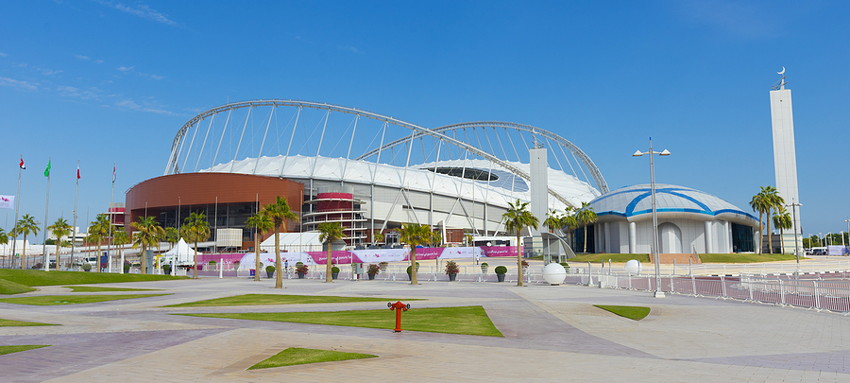
Perhaps one of the biggest changes that has been introduced to the stadium ahead of the World Cup in 2022 is the use of LED lights. This brings it in-line with many of the stadiums around Europe. Away from the stadium itself, the multi-purpose ground stands amidst the Doha Sports City, which includes the Hamad Aquatic Centre, Aspire Academy and Aspire Tower.
Significant Matches / Stages It Will Host
The Khalifa International Stadium will be used as the venue for the third-place play-off, which is the latest stage of the competition that will take place there. For England fans, as well as lovers of football-based hot political takes, the game between the Three Lions and Iran will take place there on the 21st of November. Other interesting matches include the one between Germany and Japan and the game featuring Japan and Spain. In addition to the Group Stage and the third-place play-off, it will also host the Round of 16 match between the winners of Group A and the runners-up of Group B.
Trivia
Named after Khalifa bin Hamad Al Thani, the former Emir of Qatar, it hosted all 15 matches for the 11th Gulf Cup in 1992. Some of the 2021 FIFA Arab Cup matches were played here, whilst five of the FIFA Club World Cup games took place in the stadium. That included the final between Liverpool and Flamengo, which Liverpool won 1-0.
Stats
- What Groups Will The Stadium Be Used For? – Group A, Group B, Group E, Group F
- Highest Stage The Stadium Will Be Used For – Third-place Play-Off
- The Number Of Matches Hosted – 8
- Capacity – 45,416
- Opened – 1976 (Renovated 2017)
- City – Doha
Al Janoub Stadium
The Building Process
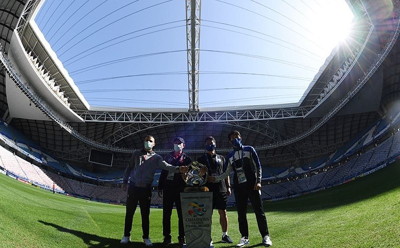
Formerly known as the Al-Wakrah Stadium, the Al Janoub Stadium saw ground broken in 2014. That was one of the earliest moments that a new stadium’s construction got underway ahead of the World Cup 2022. Designed by Zaha Hadid and her firm, Zaha Hadid Architects, it was created to sit in the heart of the urban extension of the nearby city. Inspired by the sails of Dhow boats, which are used by the regions pearl divers, the roof was created to resemble a ship’s hull. The opaque roof and wall areas sit as pleated cross-sections.It was designed alongside a new precinct of the city, putting it in the centre of things. Built as a joint-venture between MIDMAC, Sixco and PORR Qatar, the entire project was managed by KEO International Consultants. There are eight air handling units that have been placed either side of the pitch in order to keep it cool during matches. There are also plenums that run under the seats so as to keep spectators cool. The roof weighs 378 tonnes and measures 92 metres. This ‘oculus beam’ is 50 metres above the pitch.
Main Features
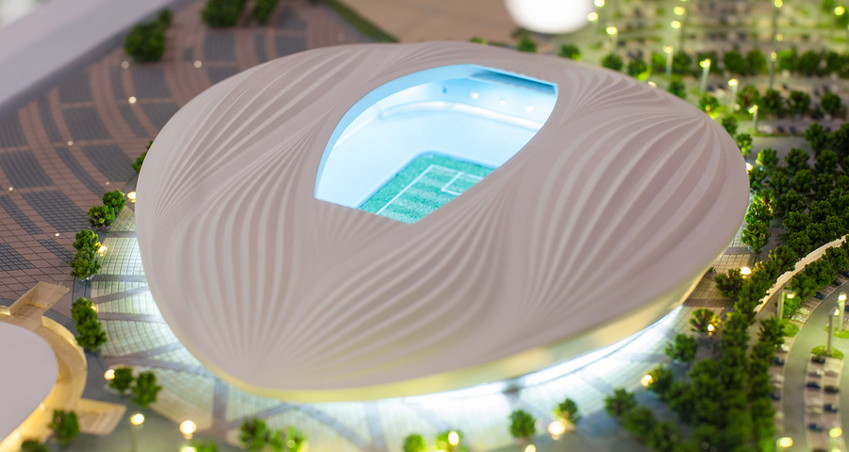
The most striking thing about the Al Janoub Stadium is the retractable roof. It can close in approximately 30 minutes, with the process of building it taking 40 days. It was built on temporary frames before being lifted into the correct position. The cooling technology will also be a big feature, being state-of-the-art and using more than 100 air ventilation units.
Significant Matches / Stages It Will Host
It is fair to say that there aren’t many thrilling matches taking place at the Al Janoub Stadium. That, of course, is something of an ever-green statement for the rest of the grounds in use, simply thanks to how much the World Cup has been diluted thanks to FIFA’s decision to allow more and more teams to take part in it. Ghana versus Uruguay might have some spice to it, largely thanks to Luis Suarez’s infamous handball that took place in the 2010 World Cup to knock the Africans out and see Uruguay into the semi-finals.
Trivia
The building is supposed to look like upturned dhow hulls that would provide shelter to the sailors. The retractable roof is made from PTFE fabric and cables, with the arches being 230 metres long. In theory, the cooling system will keep temperatures at 18 degrees centigrade in the stands and 20 degrees centigrade on the pitch. After the World Cup, it will be the home of Qatar Stats League side Al-Wakrah SC, with about half of the 40,000 seats being removed and sent to other countries in the wake of the tournament. It is part of a sports complex, which also includes swimming pools, spas and a shopping centre.
Stats
- What Groups Will The Stadium Be Used For? – Group D, Group G, Group H
- Highest Stage The Stadium Will Be Used For – Round of 16
- The Number Of Matches Hosted – 7
- Capacity – 40,000
- Opened – 2019
- City – Al Wakrah
Fixtures
Group A
| Fixture | UK KO Time | City | Stadium | ||
|---|---|---|---|---|---|
| v | 20th Nov, 16:00 | Al Khor | Al Bayt Stadium | ||
| v | 21st Nov, 16:00 | Doha | Al Thumama Stadium | ||
| v | 25th Nov, 13:00 | Doha | Al Thumama Stadium | ||
| v | 25th Nov, 16:00 | Al Rayyan | Khalifa International Stadium | ||
| v | 29th Nov, 15:00 | Al Rayyan | Khalifa International Stadium | ||
| v | 29th Nov, 15:00 | Al Khor | Al Bayt Stadium |
Group B
| Fixture | UK KO Time | City | Stadium | ||
|---|---|---|---|---|---|
| v | 21st Nov, 13:00 | Al Rayyan | Khalifa International Stadium | ||
| v | 21st Nov, 19:00 | Al Rayyan | Ahmad bin Ali Stadium | ||
| v | 25th Nov, 10:00 | Al Rayyan | Ahmad bin Ali Stadium | ||
| v | 25th Nov, 19:00 | Al Khor | Al Bayt Stadium | ||
| v | 29th Nov, 19:00 | Al Rayyan | Ahmad bin Ali Stadium | ||
| v | 29th Nov, 19:00 | Doha | Al Thumama Stadium |
Group C
| Fixture | UK KO Time | City | Stadium | ||
|---|---|---|---|---|---|
| v | 22nd Nov, 10:00 | Lusail | Lusail Iconic Stadium | ||
| v | 22nd Nov, 16:00 | Doha | Stadium 974 | ||
| v | 26th Nov, 13:00 | Al Rayyan | Education City Stadium | ||
| v | 26th Nov, 19:00 | Lusail | Lusail Iconic Stadium | ||
| v | 30th Nov, 19:00 | Doha | Stadium 974 | ||
| v | 30th Nov, 19:00 | Lusail | Lusail Iconic Stadium |
Group D
| Fixture | UK KO Time | City | Stadium | ||
|---|---|---|---|---|---|
| v | 22nd Nov, 13:00 | Al Rayyan | Education City Stadium | ||
| v | 22nd Nov, 19:00 | Al Wakrah | Al Janoub Stadium | ||
| v | 26th Nov, 10:00 | Al Wakrah | Al Janoub Stadium | ||
| v | 26th Nov, 16:00 | Doha | Stadium 974 | ||
| v | 30th Nov, 15:00 | Al Wakrah | Al Janoub Stadium | ||
| v | 30th Nov, 15:00 | Al Rayyan | Education City Stadium |
Group E
| Fixture | UK KO Time | City | Stadium | ||
|---|---|---|---|---|---|
| v | 23rd Nov, 13:00 | Al Rayyan | Khalifa International Stadium | ||
| v | 23rd Nov, 16:00 | Doha | Al Thumama Stadium | ||
| v | 27th Nov, 10:00 | Al Rayyan | Ahmad bin Ali Stadium | ||
| v | 27th Nov, 19:00 | Al Khor | Al Bayt Stadium | ||
| v | 1st Dec, 19:00 | Al Rayyan | Khalifa International Stadium | ||
| v | 1st Dec, 19:00 | Al Khor | Al Bayt Stadium |
Group F
| Fixture | UK KO Time | City | Stadium | ||
|---|---|---|---|---|---|
| v | 23rd Nov, 10:00 | Al Khor | Al Bayt Stadium | ||
| v | 23rd Nov, 19:00 | Al Rayyan | Ahmad bin Ali Stadium | ||
| v | 27th Nov, 13:00 | Doha | Al Thumama Stadium | ||
| v | 27th Nov, 16:00 | Al Rayyan | Khalifa International Stadium | ||
| v | 1st Dec, 15:00 | Al Rayyan | Ahmad bin Ali Stadium | ||
| v | 1st Dec, 15:00 | Doha | Al Thumama Stadium |
Group G
| Fixture | UK KO Time | City | Stadium | ||
|---|---|---|---|---|---|
| v | 24th Nov, 10:00 | Al Wakrah | Al Janoub Stadium | ||
| v | 24th Nov, 19:00 | Lusail | Lusail Iconic Stadium | ||
| v | 28th Nov, 10:00 | Al Wakrah | Al Janoub Stadium | ||
| v | 28th Nov, 16:00 | Doha | Stadium 974 | ||
| v | 2nd Dec, 19:00 | Doha | Stadium 974 | ||
| v | 2nd Dec, 19:00 | Lusail | Lusail Iconic Stadium |
Group H
| Fixture | UK KO Time | City | Stadium | ||
|---|---|---|---|---|---|
| v | 24th Nov, 13:00 | Al Rayyan | Education City Stadium | ||
| v | 24th Nov, 16:00 | Doha | Stadium 974 | ||
| v | 28th Nov, 13:00 | Al Rayyan | Education City Stadium | ||
| v | 28th Nov, 19:00 | Lusail | Lusail Iconic Stadium | ||
| v | 2nd Dec, 15:00 | Al Wakrah | Al Janoub Stadium | ||
| v | 2nd Dec, 15:00 | Al Rayyan | Education City Stadium |
Round of 16
| Fixture | UK KO Time | City | Stadium | ||
|---|---|---|---|---|---|
| v | 3rd Dec, 15:00 | Al Rayyan | Khalifa International Stadium | ||
| v | 3rd Dec, 19:00 | Al Rayyan | Ahmad bin Ali Stadium | ||
| v | 4th Dec, 15:00 | Doha | Al Thumama Stadium | ||
| v | 4th Dec, 19:00 | Al Khor | Al Bayt Stadium | ||
| v | 5th Dec, 15:00 | Al Wakrah | Al Janoub Stadium | ||
| v | 5th Dec, 19:00 | Doha | Stadium 974 | ||
| v | 6th Dec, 15:00 | Al Rayyan | Education City Stadium | ||
| v | 6th Dec, 19:00 | Lusail | Lusail Iconic Stadium |
Quarter Finals
| Fixture | UK KO Time | City | Stadium | ||
|---|---|---|---|---|---|
| v | 9th Dec, 15:00 | Al Rayyan | Education City Stadium | ||
| v | 9th Dec, 19:00 | Lusail | Lusail Iconic Stadium | ||
| v | 10th Dec, 15:00 | Doha | Al Thumama Stadium | ||
| v | 10th Dec, 19:00 | Al Khor | Al Bayt Stadium |
Semi-Finals
| Fixture | UK KO Time | City | Stadium | ||
|---|---|---|---|---|---|
| v | 13th Dec, 19:00 | Lusail | Lusail Iconic Stadium | ||
| v | 14th Dec, 19:00 | Al Khor | Al Bayt Stadium |
Third Place Play Off
| Fixture | UK KO Time | City | Stadium | ||
|---|---|---|---|---|---|
| v | 17th Dec, 15:00 | Al Rayyan | Khalifa International Stadium |
World Cup 2022 Final – Sunday 18th December
| Fixture | UK KO Time | City | Stadium | ||
|---|---|---|---|---|---|
| v | 18th Dec, 15:00 | Lusail | Lusail Iconic Stadium |

